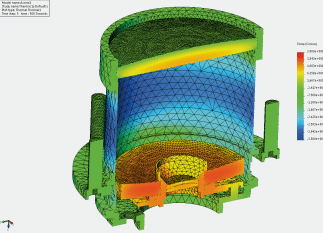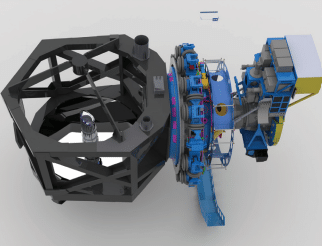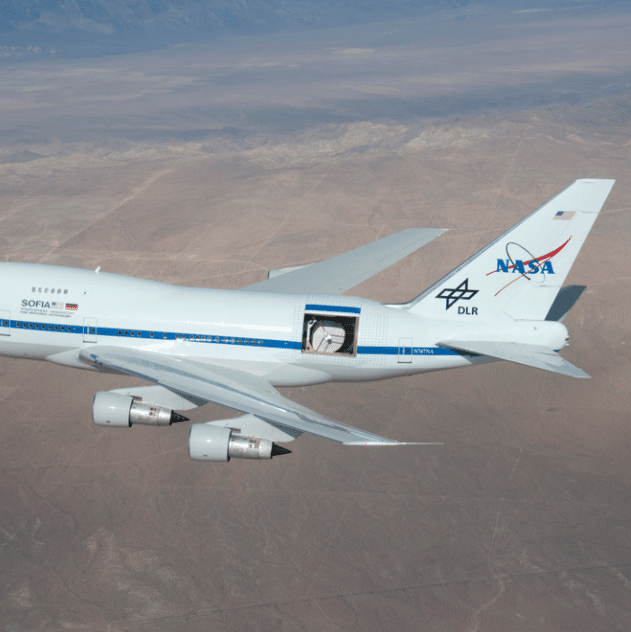The Stratospheric Observatory for Infrared Astronomy (SOFIA)
is a refurbished Boeing 747 SP aircraft that is equipped with a
2.7-meter infrared telescope, making it the world’s only flying
observatory. This innovative research plane enables scientists
to view the infrared spectrum of light, which is only partially
visible from the ground, from SOFIA’s cruising altitude in the
stratosphere. It was jointly developed through a partnership
between the German Aerospace Centre (DLR) and the U.S.
National Aeronautics and Space Administration (NASA).

Scientific operation of SOFIA is coordinated by the German SOFIA Institute (DSI), which is based at the University of Stuttgart, and the Universities Space Research Association (USRA) in the United States. A consortium of German industry designed and manufactured the telescope on behalf of DLR. The vibrational and rotational isolation systems, tracking cameras, and telescope/tracking system interface were developed by DSI. NASA was responsible for modification of the long-range aircraft, telescope installation, flight-testing, and operations. SOFIA’s key advantage over ground-based telescopes is that astronomers can position the observatory at the precise location necessary to view rare celestial events, such as occultations, and make observations from the northern and southern hemispheres with the same set of instruments.

The SOFIA development team used SOLIDWORKS modeling
software to design the various assemblies and components
required to stabilize the telescope and tracking cameras during
flight. They also leveraged SOLIDWORKS Simulation tools to
validate and optimize design performance in the challenging
operating environment of a moving aircraft in the stratosphere.
In addition to easing collaboration and communication across the mechanical design team—the back-and-forth between the telescope stabilization effort and the positioning camera/ telescope interface, for example—the SOLIDWORKS design platform facilitated interactions with other teams responsible for electronics, software, and optics development.
The development of the SOFIA flying observatory, which had
its first scientific flight in 2010 and began its official operating
status in May 2014, has led to a range of astronomical
achievements. These include the occultation of Pluto, when
Pluto’s shadow moved across the Earth; the discovery of two
new molecules in the interstellar medium, sulfur hydride and
deuterated hydroxyl; and gas dynamics and star formation
discoveries at the center of our galaxy, the Milky Way.



